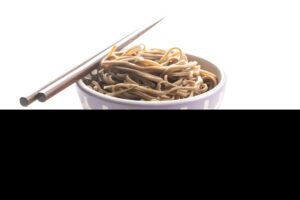The Japanese New Year

Asian Woman clean the floor at home prepare for lunar new year
Oshogatsu is spent with family. The New Year’s holiday lasts for a week of December 28 through January 6. For Japanese Americans, this time of the year is full of rich traditions.
Osoji (“cleaning”) is part of the Oshogatsu ritual – a Japanese equivalent of “spring cleaning.” This happens at the end of the year because the Japanese believe this is a good time to make a fresh start for the coming months.
Once the house is clean, cooking begins for the traditional New Year’s meals. On New Year’s Eve, soba noodles are served just before midnight and eaten as the New Year arrives.

Cooked soba noodles. Traditional asian pasta in bowl isolated on white background.
O-zoni is a mochi soup cooked with vegetables and other foods. The ingredients may change depending on a family’s recipe, but mochi (rice cake) is always there. O-zoni is the first meal of the new year, because it insures a happy year to come.

